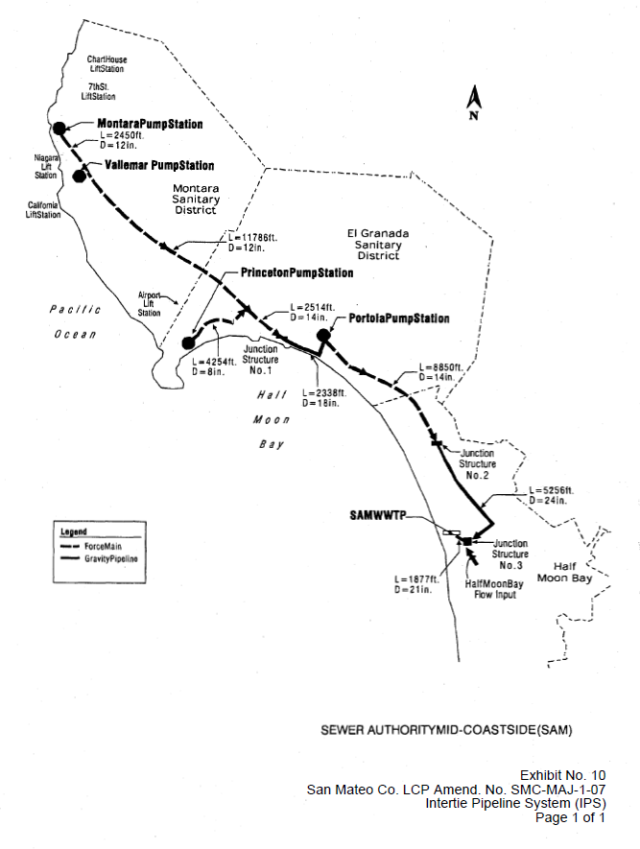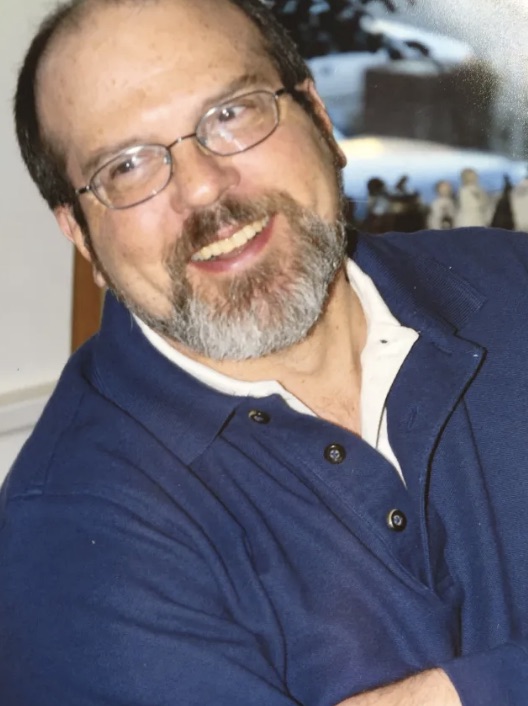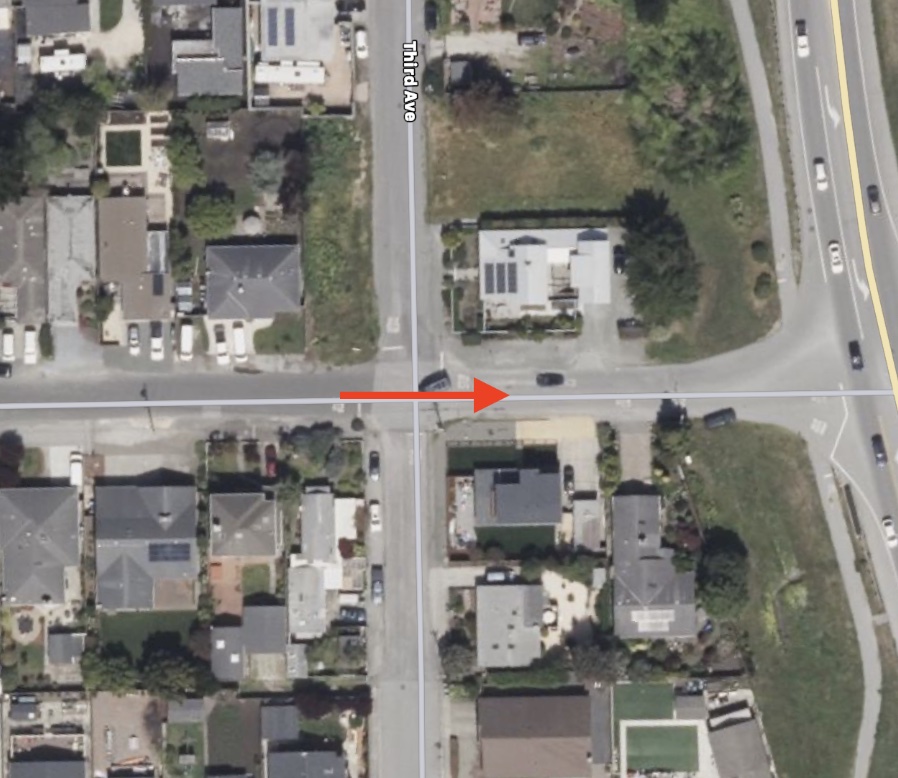|
Getting your Trinity Audio player ready...
|
OWN VOICE. ~ InPerspective by Gregg Dieguez —
“You win or lose in the Jungle, everyone loses in Court.“ (referring to Civil cases) And that’s where we are with the HMB lawsuit against its partners in SAM. In court. Per HMB, the stakes are $4.6 million in 2010 dollars. Of course MWSD and GCSD had to contest the lawsuit to protect their ratepayers. And now, everyone’s trying to rush to judgment because: a) they believe they’re right, and it’s obvious (isn’t it?), and b) we’ve already spent a million dollars on this g HMB lawsuit, and that will go WAY up with an expensive trial, so let’s save time and money and pick a winner. Here’s what they’re all saying, and what they’re not saying but should say. And who’s going to prevail…
Abbreviations:
HMB – City of Half Moon Bay, aka “the City”
MWSD – Montara Water and Sanitary District
GCSD – Granada Community Services District
IPS – Intertie Pipeline System aka “the Intertie”
JPA – Joint Powers Authority or Agreement
SAM – Sewer Authority Mid-coastside
WWS – Wet Weather Storage
The simplest summary I can offer of this situation is to paraphrase the Conclusion in the well-written MWSD filing:
After 40 plus years of sharing costs and benefits from operation of a joint, integrated system, funded by Government Grants, the City decides it wants to pull out of paying its share of costs to maintain and operate an essential component of the integrated system (the Intertie Pipeline System that conveys sewage from MWSD and GCSD into the SAM treatment plant). It does so by claiming that such costs fall within the category of new construction rather than operation and maintenance. In short, the City no longer wants to accept the financial consequences of its choice to maintain a consolidated, integrated system. The City claims that repairing the IPS – whether by replacing worn out parts or leaking pipe segments resulting from normal operation – constitutes new “construction” thereby triggering the section of the JPA that governs new projects. It defies logic, and the regulations governing the Grants, to argue that once the initial equipment used in the IPS reaches the end of its life, that entire system component is no longer part of the SAM facilities and must be re-created as a “new project” funded only by MWSD and GCSD.”
HMB filed the lawsuit, so let’s start with their arguments, and follow with the rebuttals and additional arguments from the other agencies. [SAM is a named party in the lawsuit, but somehow isn’t included in filings; perhaps a result from negotiated decision to save money? I’m checking.] If you want to review the source documents, they’re in the Footnotes section at the bottom. In summary, HMB claims:
-
- City sewer customers do not use or benefit from the Intertie, and therefore need not fund it via the rates they pay the City.
- Granada and Montara funded the cost to build the Intertie, net of state and federal grants, with the City assigned no benefit from, and no burden to fund it.
- A Court injunction ordered the three agencies to construct a consolidated plant to enforce Regional Water Quality Control Board orders and water quality laws.
- The Joint Powers Agreement distinguishes SAM’s General Budget from its project budgets.
- Intertie reconstruction is not routine and general “maintenance” of a capital asset, but a “project” to replace an asset at the end of its design life — a capital improvement — from which the City does not benefit.
- It defines “Construction” to include “acquisition, reconstruction, alteration, enlargement, replacement or reparation as well as construction.” That definition excludes “maintenance.”
- Evidence of asserted benefit to the City’s sewer service area from the Intertie is not admissible to challenge the JPA statement of the parties’ agreement.
- Any previous incidental funding of smaller replacement projects related to the Intertie cannot support a claim the parties orally modified the JPA, committing the City to continue to do so.
Let’s take these points in reverse order and discuss the rebuttals and counter-arguments posed by the “partner” agencies.

8. HMB says: “Precedent doesn’t matter.”
The fact that for decades HMB shared the IPS costs, including replacement of assets, should not matter, says HMB. The other agencies claim it does matter and supports their interpretation of the JPA – that all system assets are part of an integrated system all parties agreed to fund. Note that the IPS is an SAM asset, not one owned by a single member agency. The local sewers used to collect waste are each owned by the HMB, MWSD, and GCSD local sewer agencies and there is no argument that those collection systems are owned and paid for by the local agencies. However, the pipes needed to transmit waste 8 miles to the consolidated treatment plant is part of the agreed joint agency system.
What makes this a little complicated is that HMB funded the creation of the Walker wet weather storage (WWS) tank in Montara, an initial component of the system. Then GCSD and MWSD agreed to fund the first 200,000 gals of additional storage in the Burnham strip (HMB refused to pay), and THEN just this past year an additional 200,000 gals of WWS was added in the same location, and HMB agreed to pay, but under protest subject to the results of the lawsuit. So that IPS storage has received three different ‘treatments’ in separate instances.
7. HMB says: “Just because the IPS helps us, doesn’t matter”
HMB is saying that their interpretation of the JPA language stands, even if it can be shown that the IPS helps the city. Note that HMB residents in Frenchman’s Creek and Miramar are served by GCSD sewers, and thus require the IPS. HMB is thus also suing those HMB residents in this lawsuit. There is a lot of benefit from the IPS to HMB, covered under point 1, below.
6. HMB contends IPS work isn’t part of the General Budget.
Currently, IPS expenses of all types ARE part of the General Budget, and have been for decades. Any agency that doesn’t agree to the General Budget can be kicked out of the JPA. Which would leave that agency without sewer, or at the mercy of a smaller JPA Board in which they wouldn’t have a vote. HMB almost triggered this form of default in recent years, and there are some longer-than-we-have-space-for-here stories about the games HMB Board members and city tried to play to force the IPS work OUT of the General Budget, but that’s another article. By making this argument, HMB is trying to avoid triggering a form of default if it doesn’t pay for IPS work. Note that some of the maintenance required and spills and fines came after HMB failed to agree to fund necessary IPS maintenance.
The counter-arguments to this position are several, but include the definitions of terms used under federal regulations, and the Grant funding agreements, which make it clear that asset replenishment of an ongoing treatment facility IS included.
“The term ‘operation and maintenance’ includes replacement,” and “replacement” is defined as “[e]xpenditures for obtaining and installing equipment, accessories, or appurtenances which are necessary during the useful life of the treatment works to maintain the capacity and performance for which such works were designed and constructed…. These regulations further defined “useful life” as the “Estimated period during which a treatment works will be operated.”
5. HMB contends: Intertie work is a capital expense and must follow the rules for agreement and participation as a Project.
The Project Budgets allow agencies to agree to participate, or not, and thus not be required to pay for those projects. That’s why HMB wants those JPA rules to cover IPS work. The counter-argument is that regulators required, and the parties to the JPA agreed, to build an integrated system, and the IPS work is part of that integrated system, not something new – like recycled water. Every asset at SAM (and the IPS is a SAM asset) will eventually wear out and need replacement. However, a “project” is a new project, such as expansion of facilities and/or entirely new facilities, not repair and replacement of existing facilities that are not expanded.
4. HMB contends: The Joint Powers Agreement distinguishes SAM’s General Budget from its project budgets.
There’s no debate about that fact. The debate is about the definition of what belongs in “project budgets” as discussed in item 5 just above.
3. HMB contends: A Court injunction ordered the three agencies to construct a consolidated plant.
That’s not exactly true. The 3 agencies could have shared an ocean sewer outfall, linked by an IPS, but still operated separate treatment plants. There was discussion of that alternative. The City Council considered a separate plant, but decided that the cost savings and grant funding made consolidation the best alternative. Montara had a new plant it was forced to abandon, in part because someone plunked the Fitzgerald Marine Reserve near its sewer outfall [I’m told HMB influenced that to get the new plant moved to HMB]. In fact, there was discussion of placing the treatment plant in Montara, at the newer plant. Further, the very point made here actually undermines HMB’s argument that it need not share in the costs of integrated operation as it shared in the benefits – of “getting out of jail”, and of saving money compared to solely owning and operating a plant.
2. HMB contends: Granada and Montara funded the cost to build the Intertie.
While true, this point is actually deceitful, and strictly an issue of timing and conv. Everyone agreed to build the IPS and the outfall while they decided whether to consolidate treatment, or not. A major JPA amendment was agreed after the decision to consolidate was reached. JPA documents clearly state:
“(Phase I expenses shall be “shared as specified below, until otherwise determined” in Phase II.) Phase II provides, “In the event the member agencies choose to construct a single consolidated treatment plant facility . . .. The total expenses of operation and maintenance of all of the components of the [SAM Sewer System] shall be shared in a manner based on flows into the single consolidated treatment plant facility.”
Thus, HMB is trying to ignore the very relevant history in that major JPA amendment in making this claim.
1. HMB contends: City sewer customers do not use or benefit from the Intertie, and therefore need not fund it via the rates they pay the City.
This point is an outright lie, and one that I cannot understand why MWSD and GCSD did not push harder on. Note first how narrowly defined the wording is: “City SEWER customers” – because HMB residents in Frenchmen’s Creek and Miramar DO use the IPS for their sewage. But more importantly, HMB gets several benefits from the IPS (as previously covered here). Most recently, with the spike in pollution caused by as-yet-unattributed sources that destabilized SAM processing for a year and resulted in what will turn out to be between $1 and 2 million in fines and expenses, the IPS was used as an ‘equalization basin’ for weeks to hold sewage from the north until the plant had more time to process it, and to avoid even more pollution violations into the ocean. Note that HMB has no wet weather storage facilities of its own. It is thus “piggy-backing”, or perhaps “parasiting” without paying, on the capacity of the long IPS pipe and the wet weather storage facilities (now 3 of them) to prevent treatment plant capacity problems that HMB contributes to (about 60% of plant flows are from HMB).
In summary, the IPS benefits HMB in five (5) ways:
1. It allowed HMB to upgrade a failing sewer plant at less cost than doing it themselves, and split the costs of property, construction, and operation with its neighbors.
2. It gives HMB protection against severe wet weather events, when SAM plant operators can turn off the flow from the north and hold the sewage in wet weather storage at the Portola and/or Walker tanks in Montara, so that HMB can consume 100% of the plant’s capacity. Which has happened at least twice in recent memory.
3. The IPS also serves all parts of HMB proper north of the SAM plant, including the “Cherry Stem” up to the Pillar Pt. Harbor – thus parts of HMB are served by GCSD sewers and HMB is suing its own residents there.
4. The IPS allows SAM staff to perform maintenance on the plant by shutting parts of it down. As HMB has no wet weather sewer storage of its own, tanks in the IPS can be used to hold sewage back at the pump stations until work is done. This has occurred several times, e.g. when the Force Main had breaks and had to be fixed. Also, while laying new force main or while doing major plant repairs, sewage can be held upstream. Similarly, when major plant electrical work must be done, sewage has been held upstream in the IPS.
5. The IPS has served as an equalization basin to reduce flows while SAM processes a backlog of waste and/or to even out flows (e.g. during a drought) so that a minimum fluid volume is always available.
BOTTOM LINE – What’s Next?:
The stakes are actually higher than HMB’s stated filing claims. If the sewer system were to be perpetual, asset replenishment costs could be infinite. In reality, the SAM plant can’t last in its current location forever. Some combination of sea level rise, climate change, new technology and/or new regulations will force replacement. The stakes also include goodwill and cooperation; why would these parties ever want to work together after this level of long-running disputes?
You can say I’m biased because I’m a Montara resident, or that I was elected to serve unincorporated MidCoast residents. However, my training in Debate taught me to research and prepare to argue both sides of an issue. From a strictly analytical viewpoint, the HMB lawsuit is deceitful, and lacks merit. However, I’ve been around lawyers in my life and career long enough to know that Court outcomes are not always based on fairness or common sense. Which is why I can’t predict the outcome. If HMB fails in this lawsuit however, then I’d ask the voters of HMB to remove those council members and/or staff who have created this lawsuit, wasted everyone’s time and money, and poisoned what should have been a collaborative community on the Coast. If they win? Well, I suppose they’ll throw a party with our money. And we should do our business in Pacifica.
FOOTNOTES:
Here are the requests for summary judgment filed by the three SAM member agencies:
Half Moon Bay Request for Summary Judgment:
[pdf-embedder url=”https://www.coastsidebuzz.com/wp-content/uploads/2021/10/HMB-Motion-for-Summary-Judgment.pdf” title=”HMB-Motion for Summary Judgment”]
GCSD Request for Summary Judgment:
[pdf-embedder url=”https://www.coastsidebuzz.com/wp-content/uploads/2021/10/GCSD-Motion-for-Summary-Judgment.pdf” title=”GCSD-Motion for Summary Judgment”]
MWSD Request for Summary Judgment:
[pdf-embedder url=”https://www.coastsidebuzz.com/wp-content/uploads/2021/10/MWSD-Motion-for-Summary-Judgment.pdf” title=”MWSD-Motion for Summary Judgment”]
More From Gregg Dieguez ~ InPerspective
Mr. Dieguez is a native San Franciscan, longtime San Mateo County resident, and semi-retired entrepreneur who causes occasional controversy on the Coastside. He is a member of the MCC, but his opinions here are his own, and not those of the Council. In 2003 he co-founded MIT’s Clean Tech Program here in NorCal, which became MIT’s largest alumni speaker program. He lives in Montara. He loves a productive dialog in search of shared understanding.






